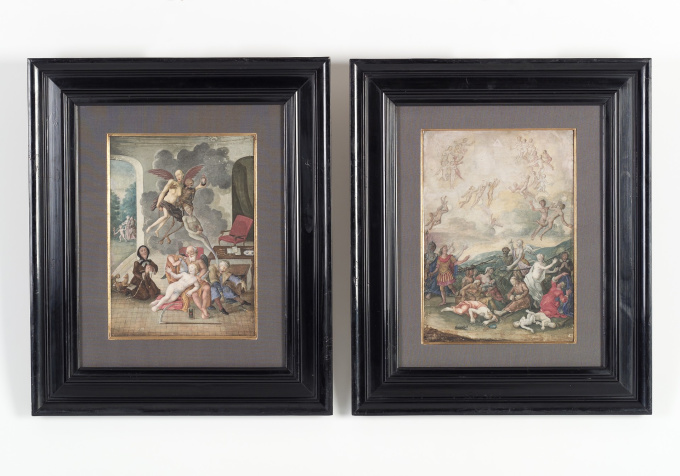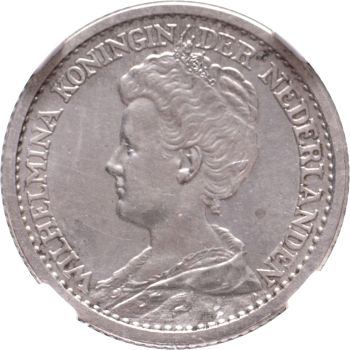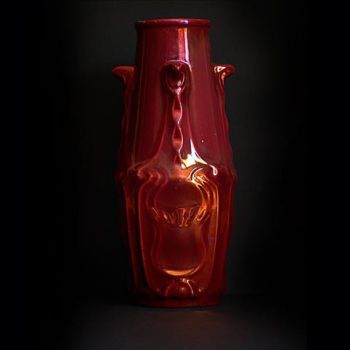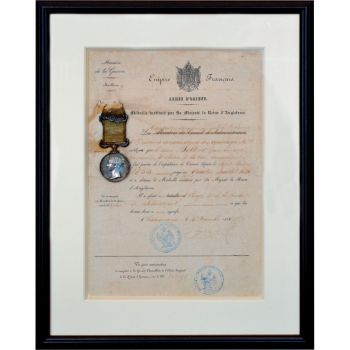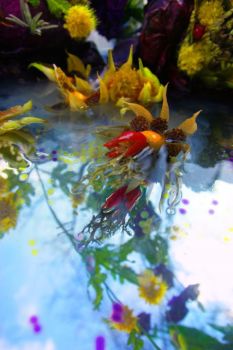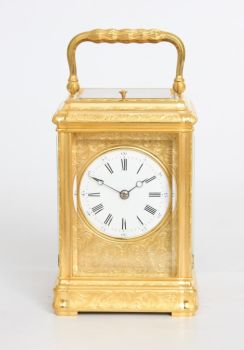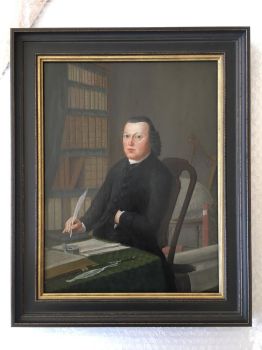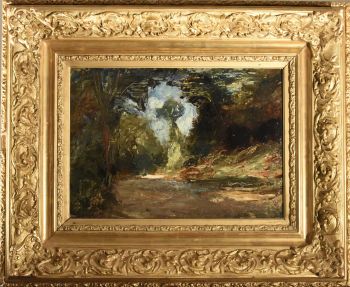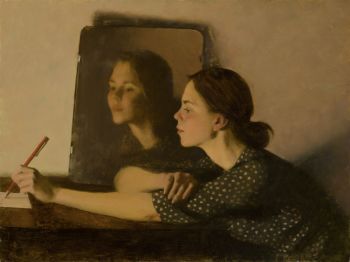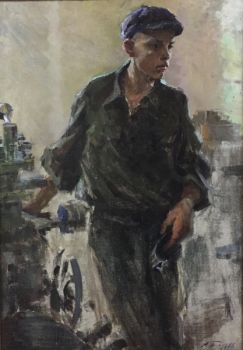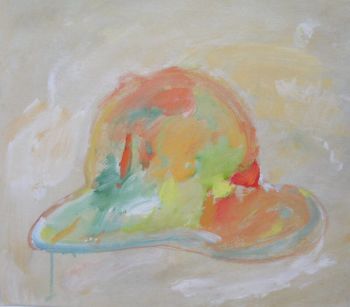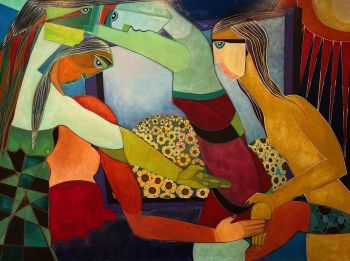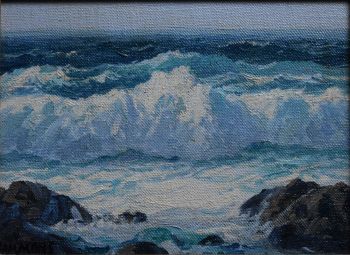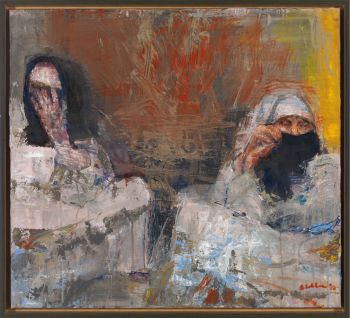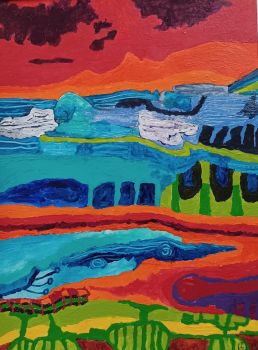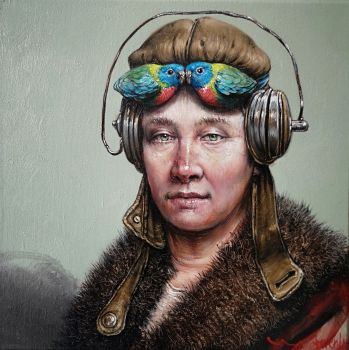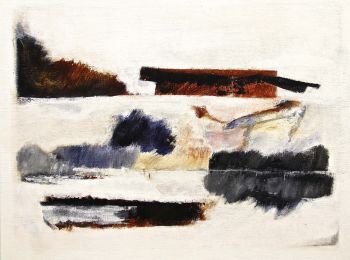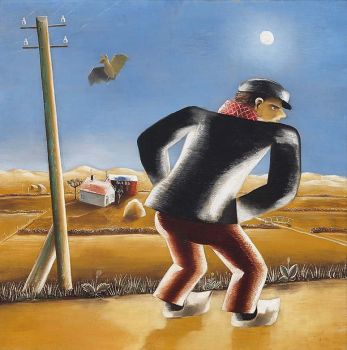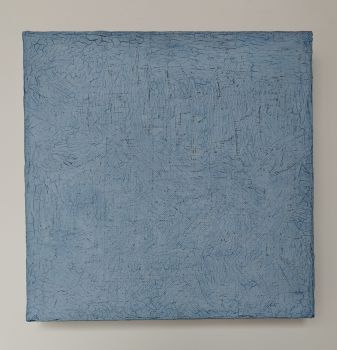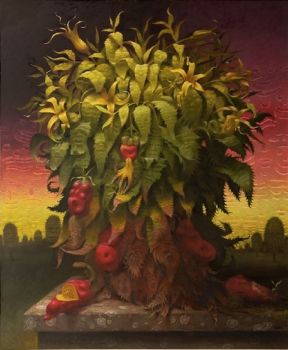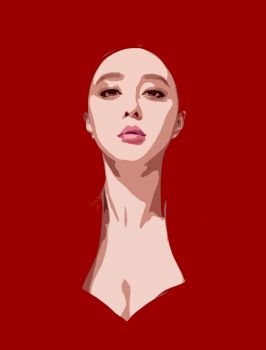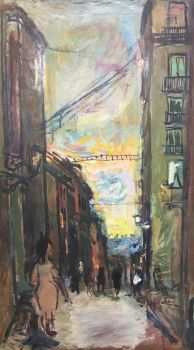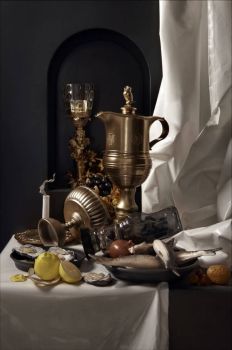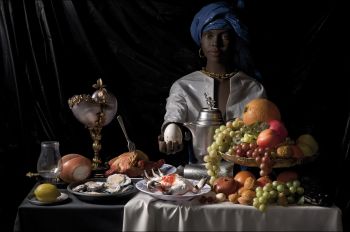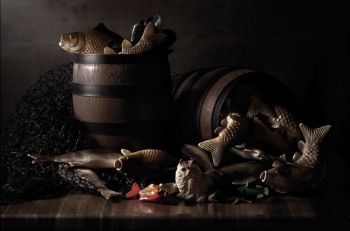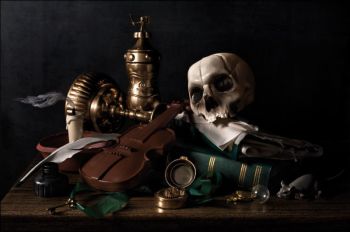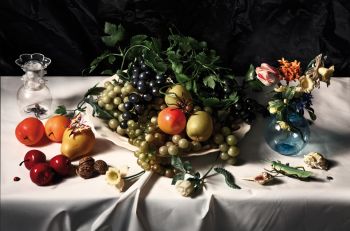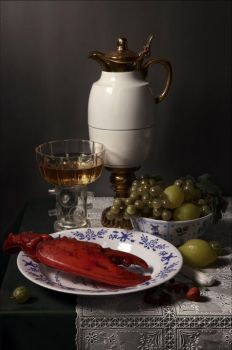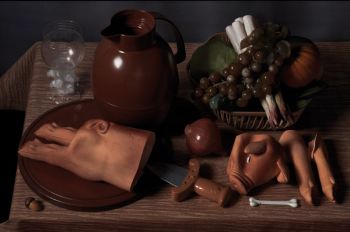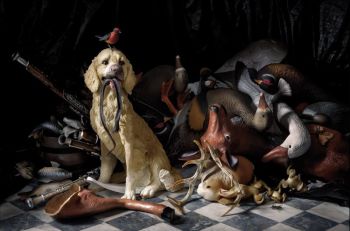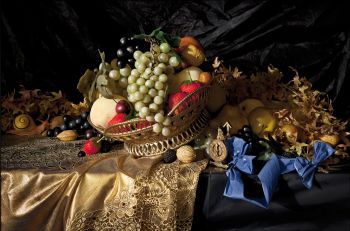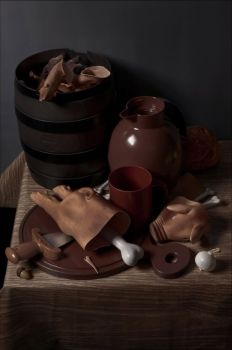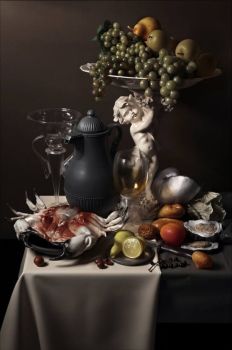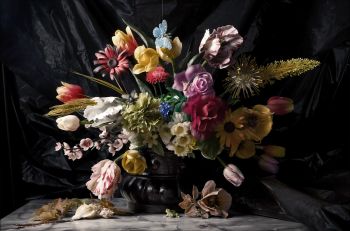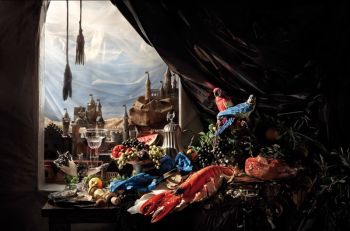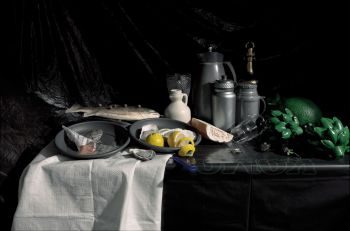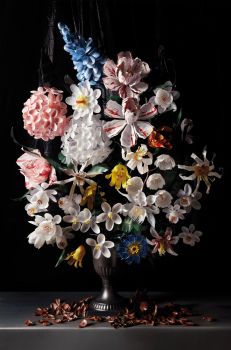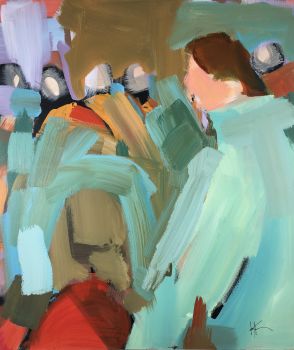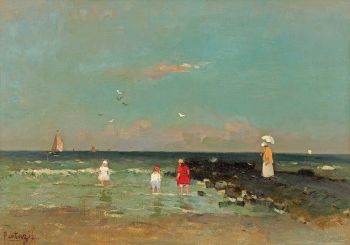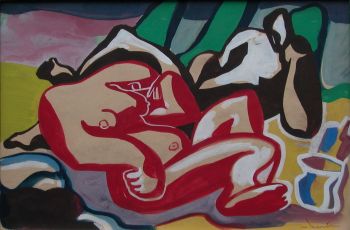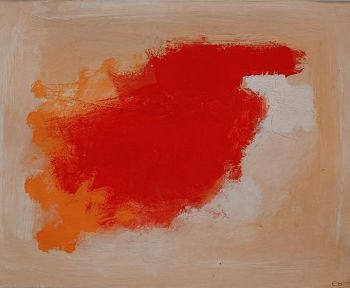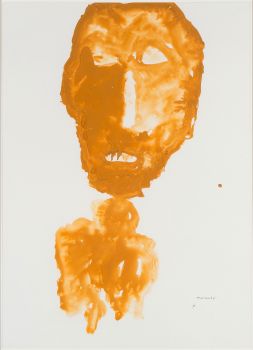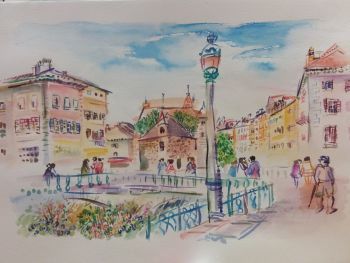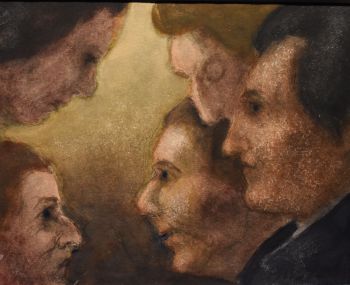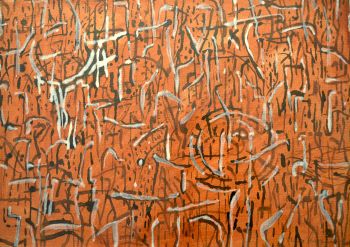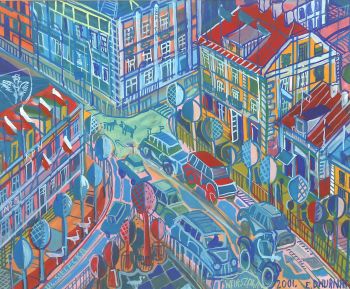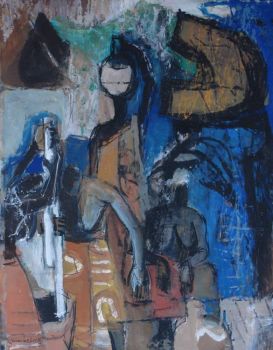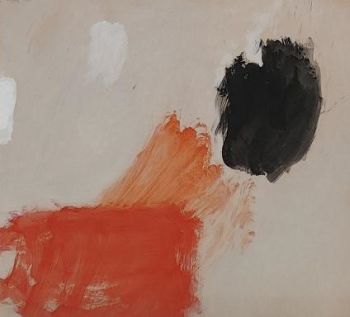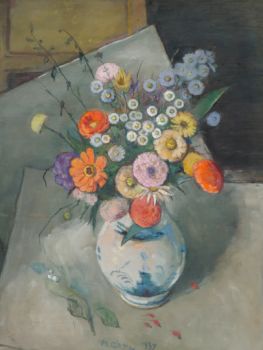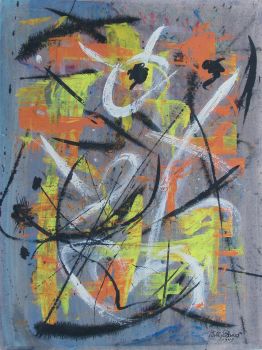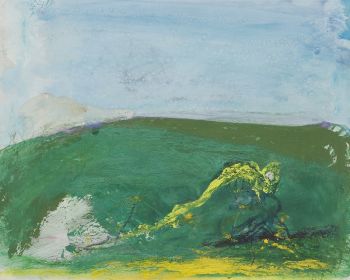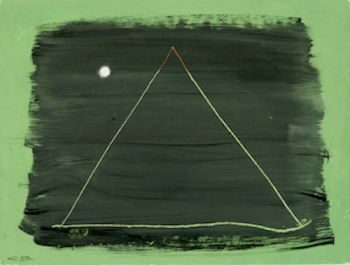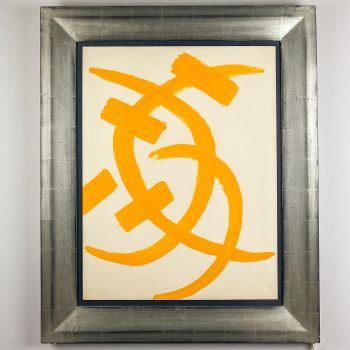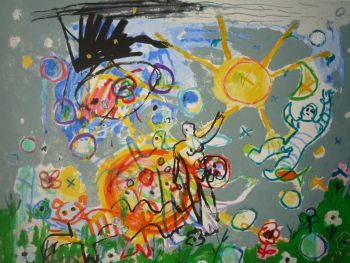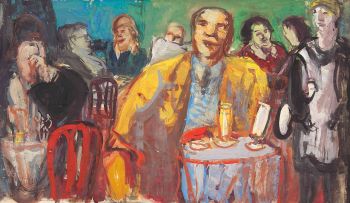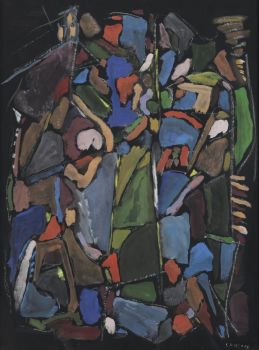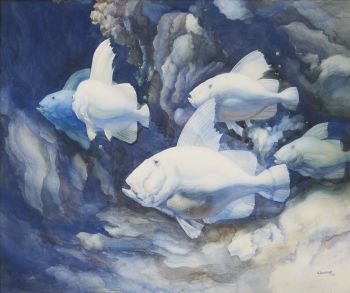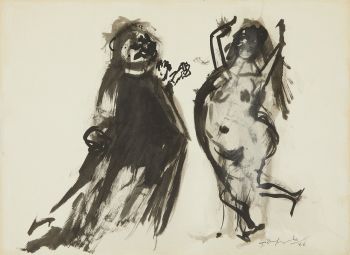Two German Gouache Paintings 1720 - 1730
Artiste Inconnu
GouachePapierAquarellePeindre
50 ⨯ 42 cm
Actuellement indisponible via Gallerease
- Sur l'oeuvre d'artTwo pictures with a rare Vanitas scene.
Father Time accompanied by Death.
In a chair in the foreground sits a winged Father Time clipping th wings of Life. In front of Time we see an hourglass and a scythe. These are both attributes of Time as is the pair of scissors with which the wings of life are pinioned.
On Time’s right hand we see a man leaned to a stool with a bandage round his head whom’s spirit is escaping through his mouth. Death is literally dragging of the spirit by its hair. Between the legs of the man we see an opened moneybag. On the left of Father Time a kneeling and lamenting woman accompanied by a monkey and a dog that reads a book.
Hovering over this scene we see Death that drags of an old woman with a pearl necklace and a portrait medallion, together with te soul of the dying man.
On the right a table with an inkwell, papers and a written text. On the left in the landscape outside a pair accompanied by a winged boy with a torch.
This unusual representation was almost certainly meant to commemorate the human mortality. Father Time with his many attributes and the grinning Death speak for themselves. The dog usually stands for faithfulness and the monkey for lasciviousness. Here it is can reasonably be assumed that the stand for the human arrogations of foolishness and vanity because they are depicted as impersonations of human beings. The text on the table might refer to the account of the deceased’s life.
The Trapnet of Death
This representiation is undoubtedly an allusion of the Last Judgement, although the separation of souls is depicted in a unique style.
Death, with his head and scythe decorated with flowers, seduces people to stay on his side of the trapnet. Behind him stands a winged figure that beckons the people towards the light.
Before the net in the foreground we see money pouches, gems and a man wearing a crown, all symbols of power and the richess of the world. Possibly the flowers that Death is adorned with refer to the transience of life and swift decay.
The absence of explicitly Christian symbols is striking in both the representations. Only the winged person in the second picture could be conceived as an angel. Traditionally however, it is God himself who in depictions of the Final Judgement seperates the sheep from the goats, surrounded by the Archangels and Apostles. Here we see none of these symbolizations.
Gouache: a technique with water soluble paint and gum arabic. The difference with watercolor is that the result is heavier and much more opaque . - Sur l'artiste
Il peut arriver qu'un artiste ou un créateur soit inconnu.
Certaines œuvres ne doivent pas être déterminées par qui elles sont faites ou elles sont faites par (un groupe d') artisans. Les exemples sont des statues de l'Antiquité, des meubles, des miroirs ou des signatures qui ne sont pas claires ou lisibles, mais aussi certaines œuvres ne sont pas signées du tout.
Vous pouvez également trouver la description suivante :
•"Attribué à …." A leur avis probablement une oeuvre de l'artiste, au moins en partie
•« Atelier de …. ou « Atelier de » À leur avis, une œuvre exécutée dans l'atelier ou l'atelier de l'artiste, éventuellement sous sa direction
•« Cercle de… ». A leur avis une oeuvre de la période de l'artiste témoignant de son influence, étroitement associée à l'artiste mais pas forcément son élève
•« Style de … ». ou "Suiveur de ...." Selon eux, une œuvre exécutée dans le style de l'artiste mais pas nécessairement par un élève ; peut être contemporain ou presque contemporain
•« Manière de… ». A leur avis une oeuvre dans le style de l'artiste mais d'une date plus tardive
•"Après …." A leur avis une copie (quelle qu'en soit la date) d'une oeuvre de l'artiste
•« Signé… », « Daté… ». ou « Inscrit » À leur avis, l'œuvre a été signée/datée/inscrite par l'artiste. L'ajout d'un point d'interrogation indique un élément de doute
• "Avec signature ….", "Avec date ….", "Avec inscription …." ou "Porte signature/date/inscription" à leur avis la signature/date/inscription a été ajoutée par quelqu'un d'autre que l'artiste
Related artworks
Artiste Inconnu
Un rare filigrane un gobelet retortoli1550 - 1600
Prix sur demandePeter Korf de Gidts - Antiquairs
1 - 4 / 12- 1 - 4 / 24
- 1 - 4 / 24
- 1 - 4 / 24

